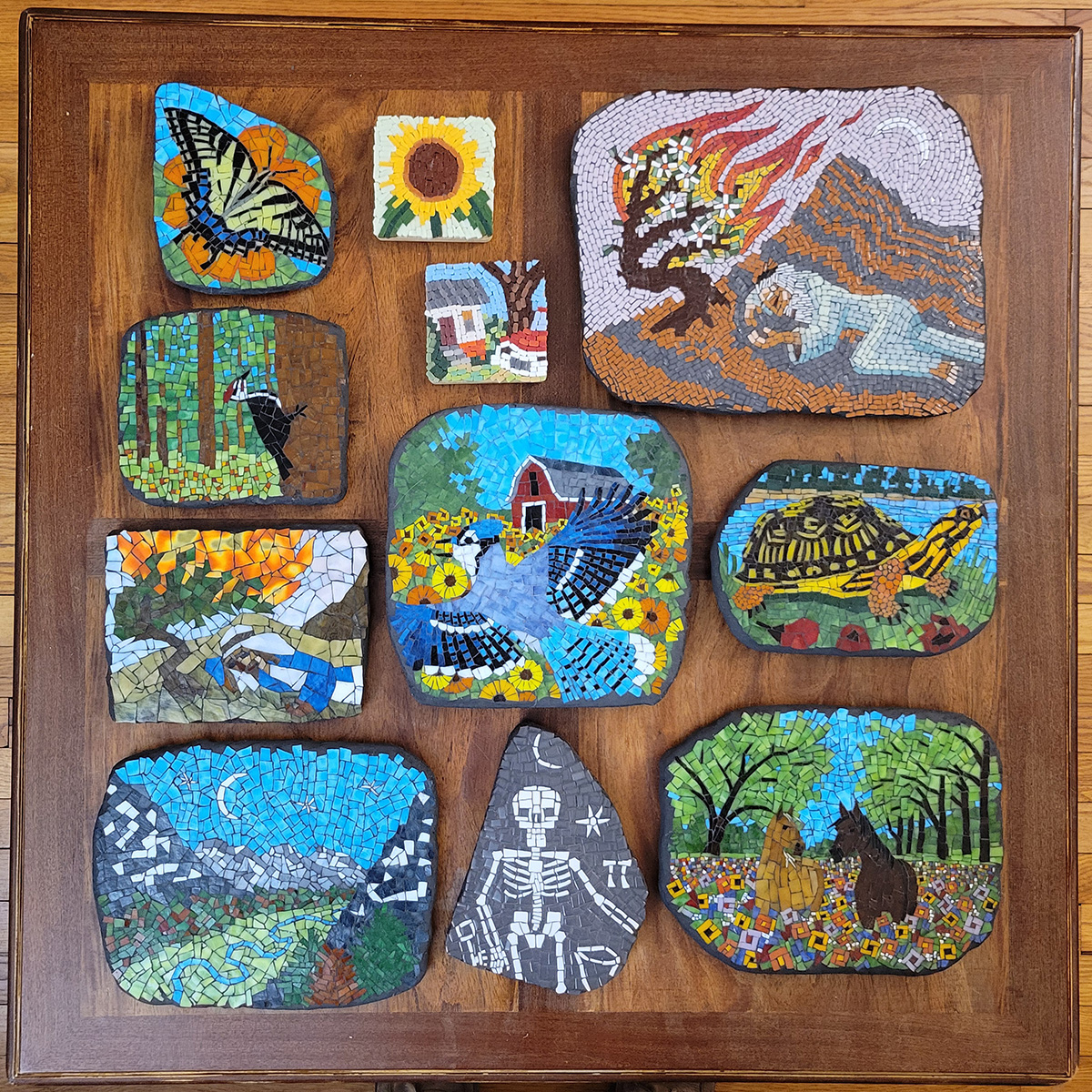-
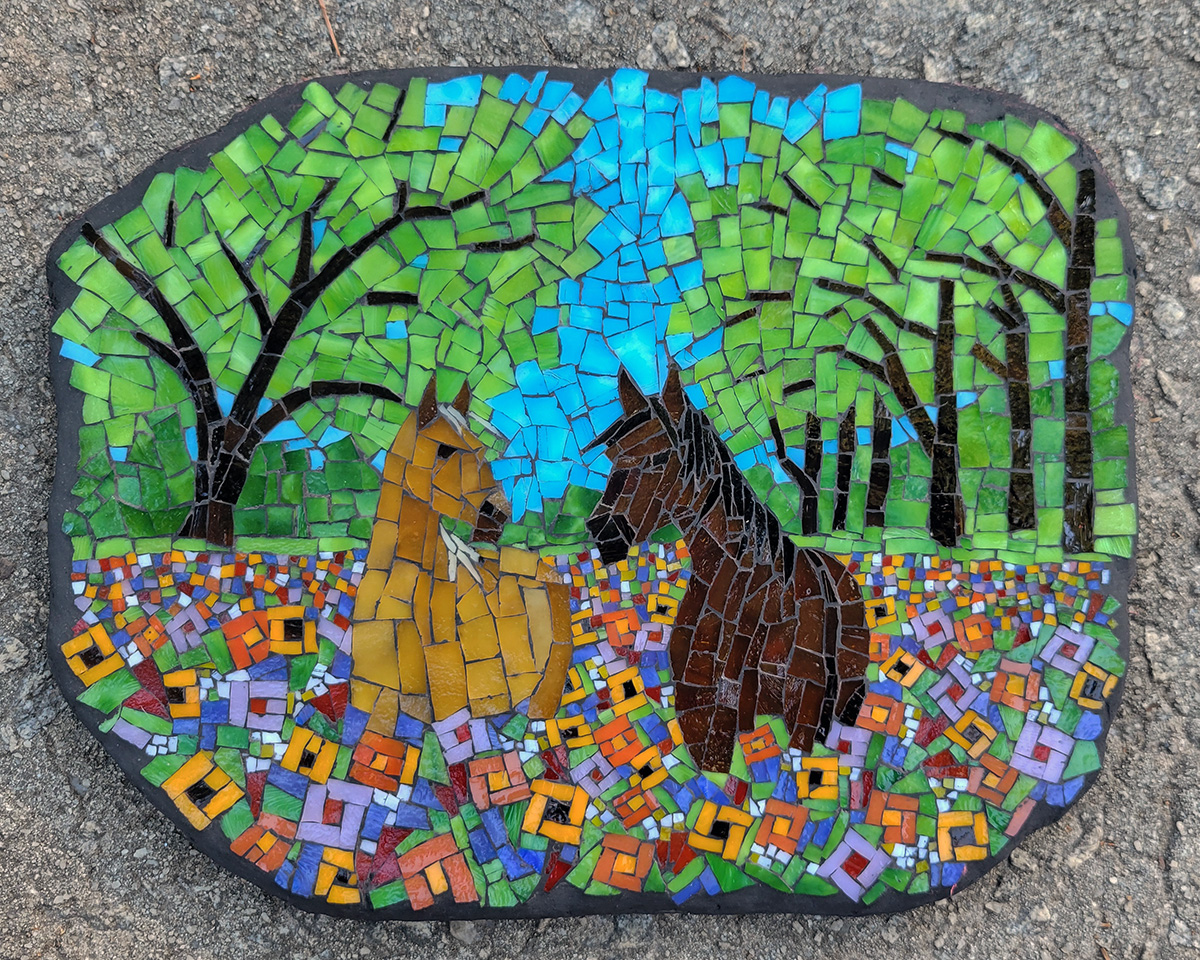
Horses in Wildflowers Mosaic
I finished my latest miniature mosaic: Horses in Wildflowers. It’s about 10 inches wide and mounted on a reinforced mortar stone, which is my backer of choice. The grout is charcoal black in color, which is my go-to color for grout. The grout is non-sanded because my grout gap is incidental and thin, the tiles…
-
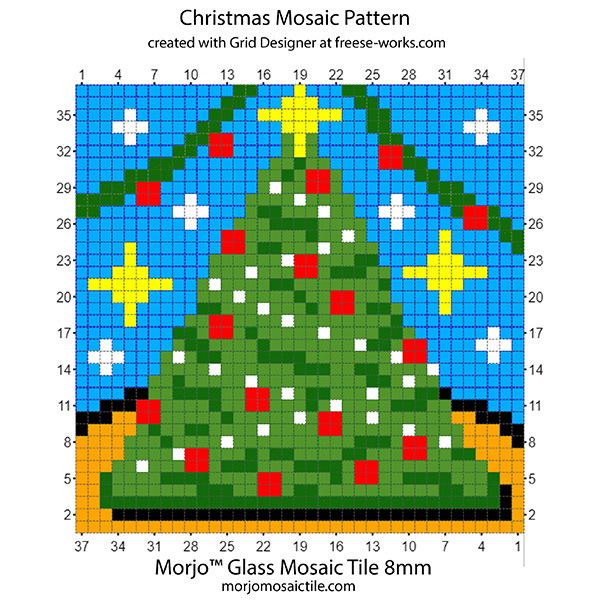
Online Mosaic Design Tool
To promote mosaic as a fine art, we encourage people to make their own mosaic designs and to choose non-gridded over gridded designs. Nevertheless, there are many situations that call for naturalistic images, and these are most easily made using a gridded design where each tile is treated as a tiny pixel.
-
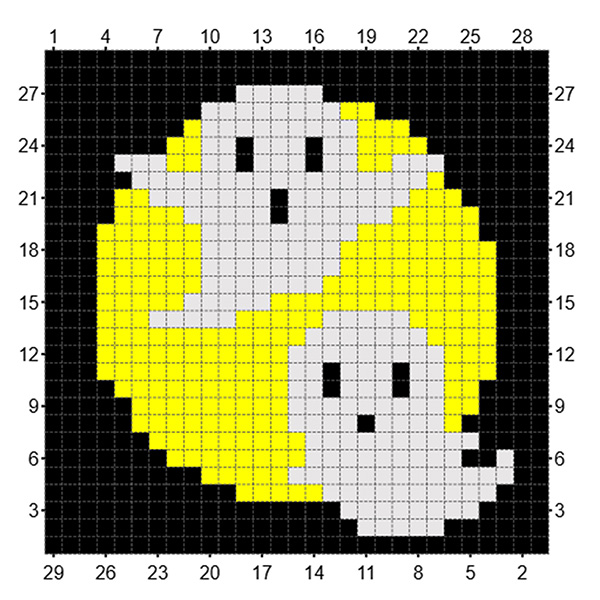
Boo! Mosaic Patterns for Halloween
Ivana created some patterns for Halloween mosaic designs that will be part of an ongoing series with new designs for each holiday. These patterns are for use with whole tiles in a grid with no grout gap and are designed for Morjo™ 10mm Vitreous Glass Mosaic Tile on a 12×12-inch mosaic backer. You can order…
-
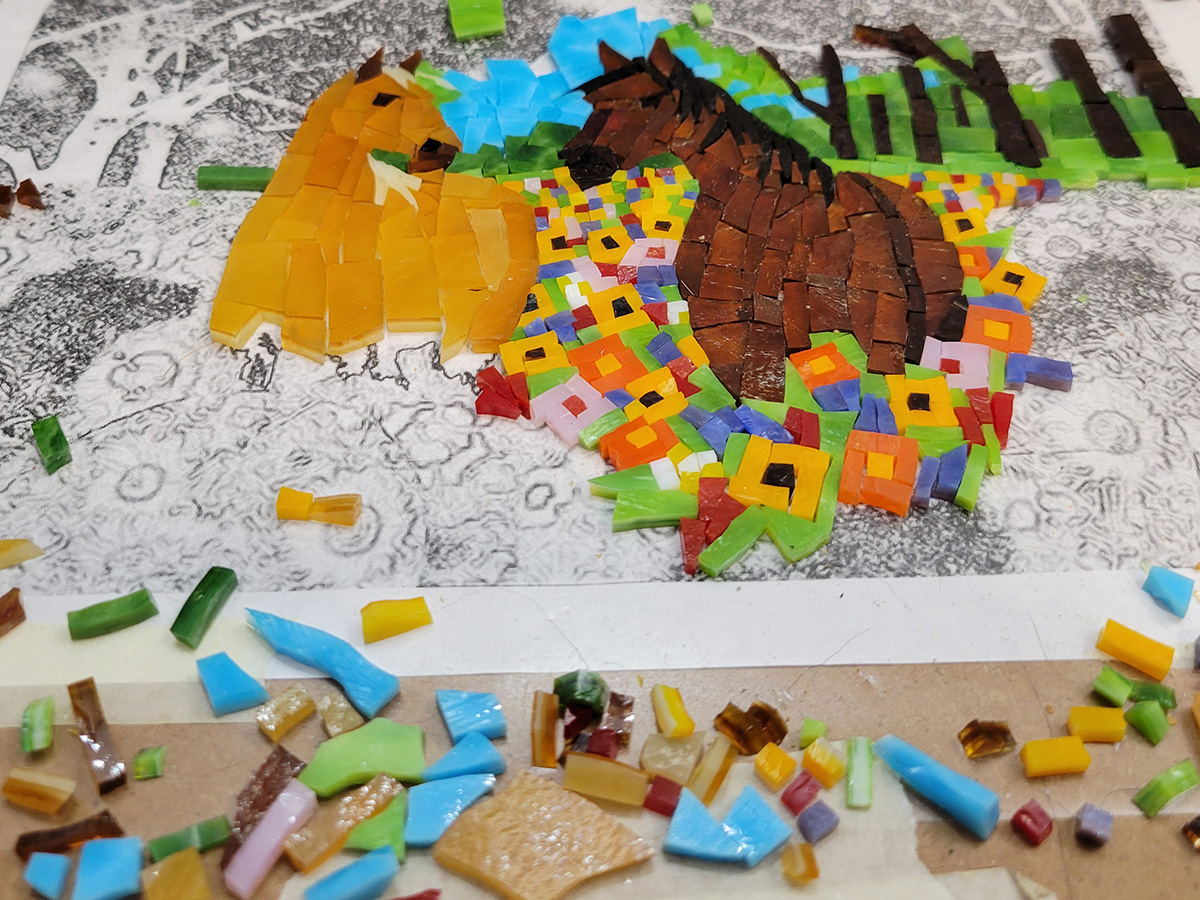
Partial Taping of In-Process Mosaic
Mosaic Mounting Tape sticks well-enough to whole uncut tile as small as 12mm to allow the sheet to be lifted and dangled and handled without tiles falling off. This is also true of whole uncut tile as small as 8mm, although the sheet can’t be handled as casually. But what about using Mosaic Mounting Tape…
-
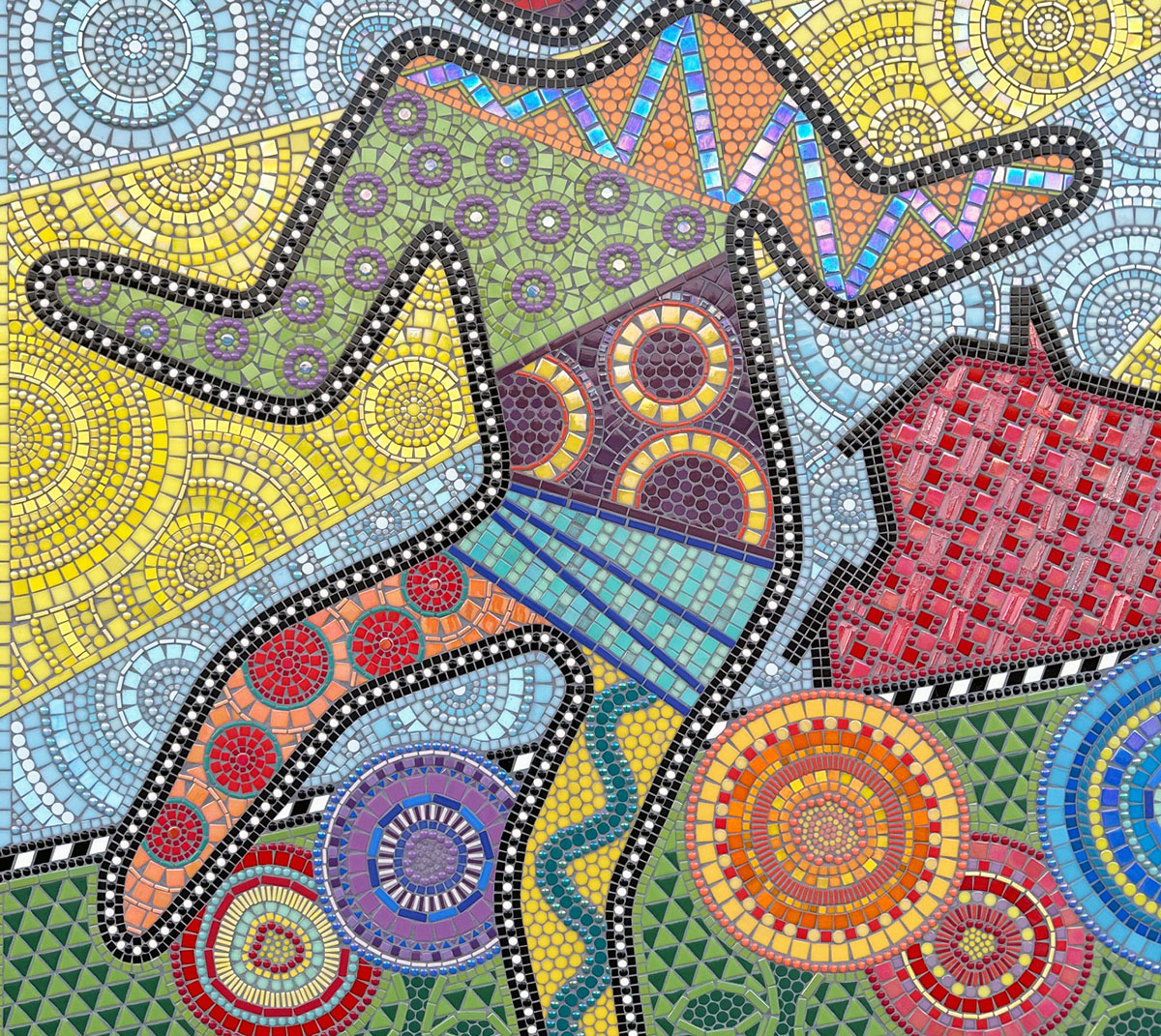
Abstract Figurative Mosaic Murals
Artist Tracy Pennington makes large mosaic murals in an Abstract Figurative style, and her Springs Park mural in LaGrange, Kentucky is a good example. Tracy’s specific style of Abstract Figurative art is based patterns and textures, which are the mosaic medium’s intrinsic strength. After all, it’s difficult to arrange tiles without the mind seeing different…
-
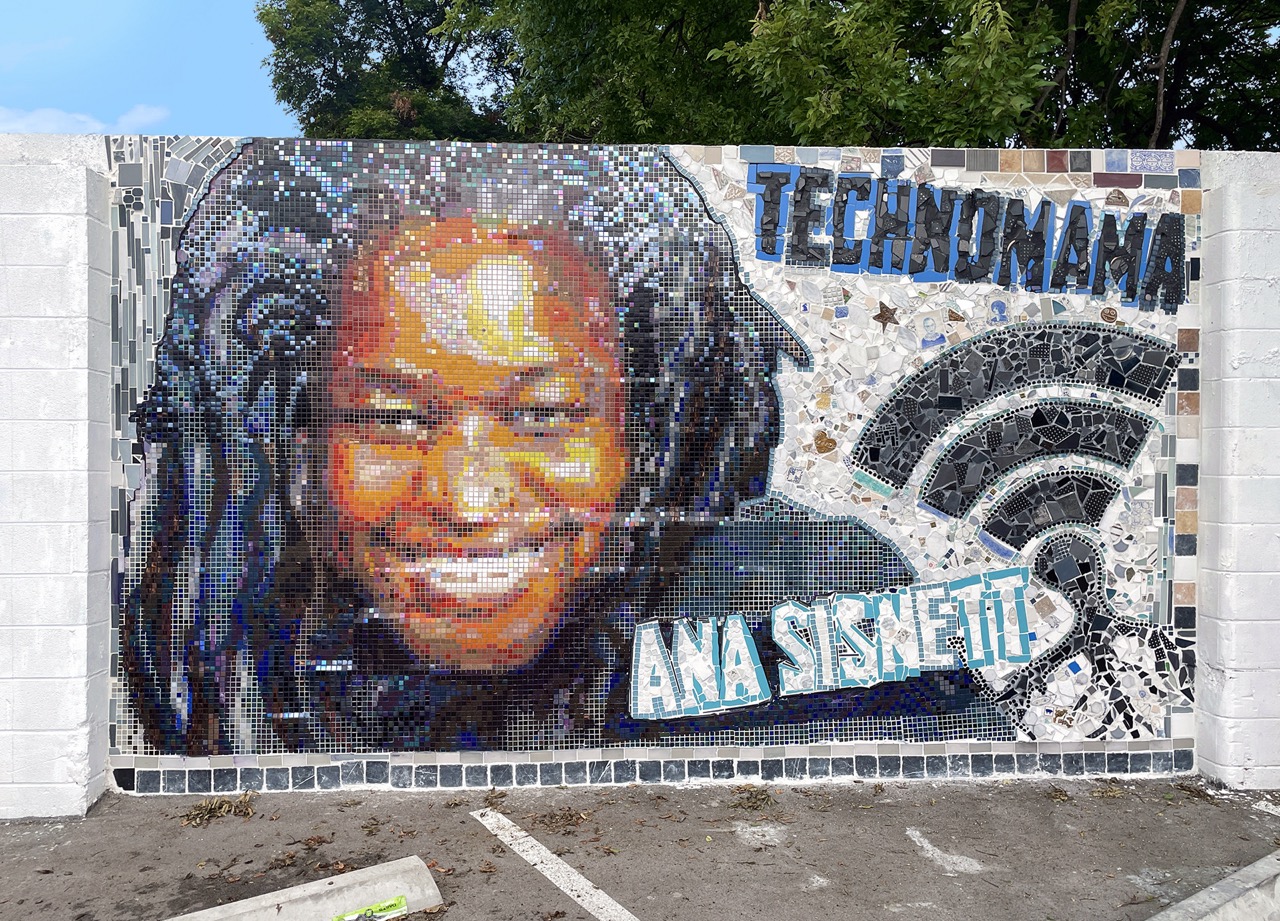
The Mosaic Workshop
An article about The Mosaic Workshop and artist J Muzacz is long overdue. Located in Austin, Texas, The Mosaic Workshop teaches people of all ages and abilities the art of mosaic making through hands-on classes at all levels and community-led mosaic murals of monumental scale.
-
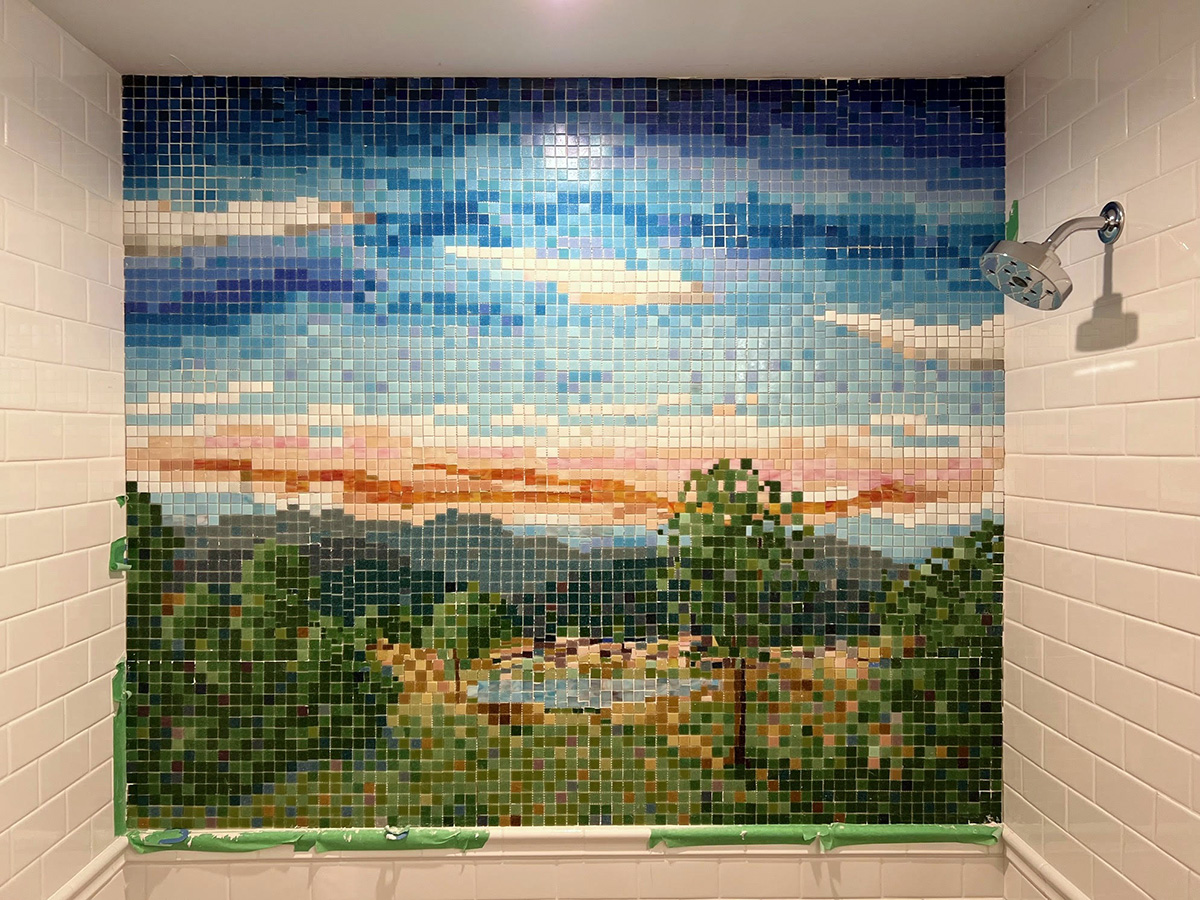
Impressionist Landscape Mosaic Mural
Artist David Hilbertson recently completed his first mosaic and photo-documented the process of making it, which was somewhat of a tour-de-force in terms of using improvisation and working around problems. Even the image itself is more improvised than not, and yet the results are akin to an Impressionist painting or a pixelated photograph.
-
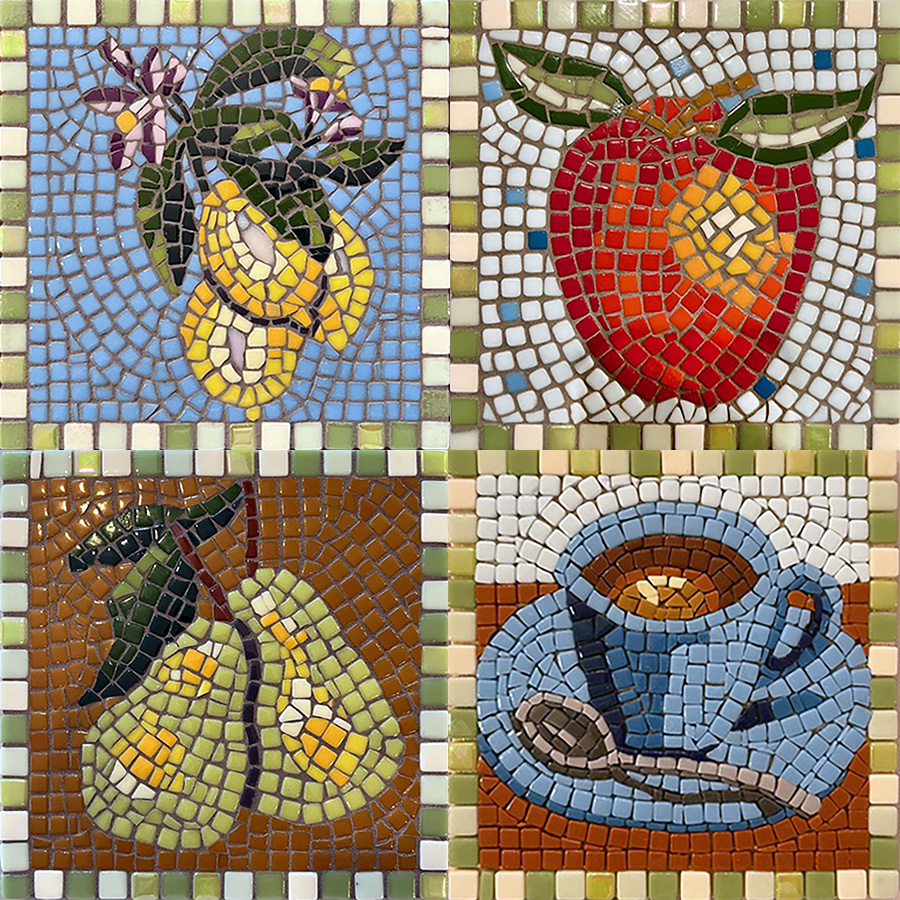
Still Life Mosaic Series
Louise Roberts recently emailed me to say that she has been teaching herself mosaic using our blog and that she followed my recommendation to make a series of small mosaics of the same size. She also attached some photos of her mosaics, and they are impressive. To me, her mosaics are yet more proof that…
-
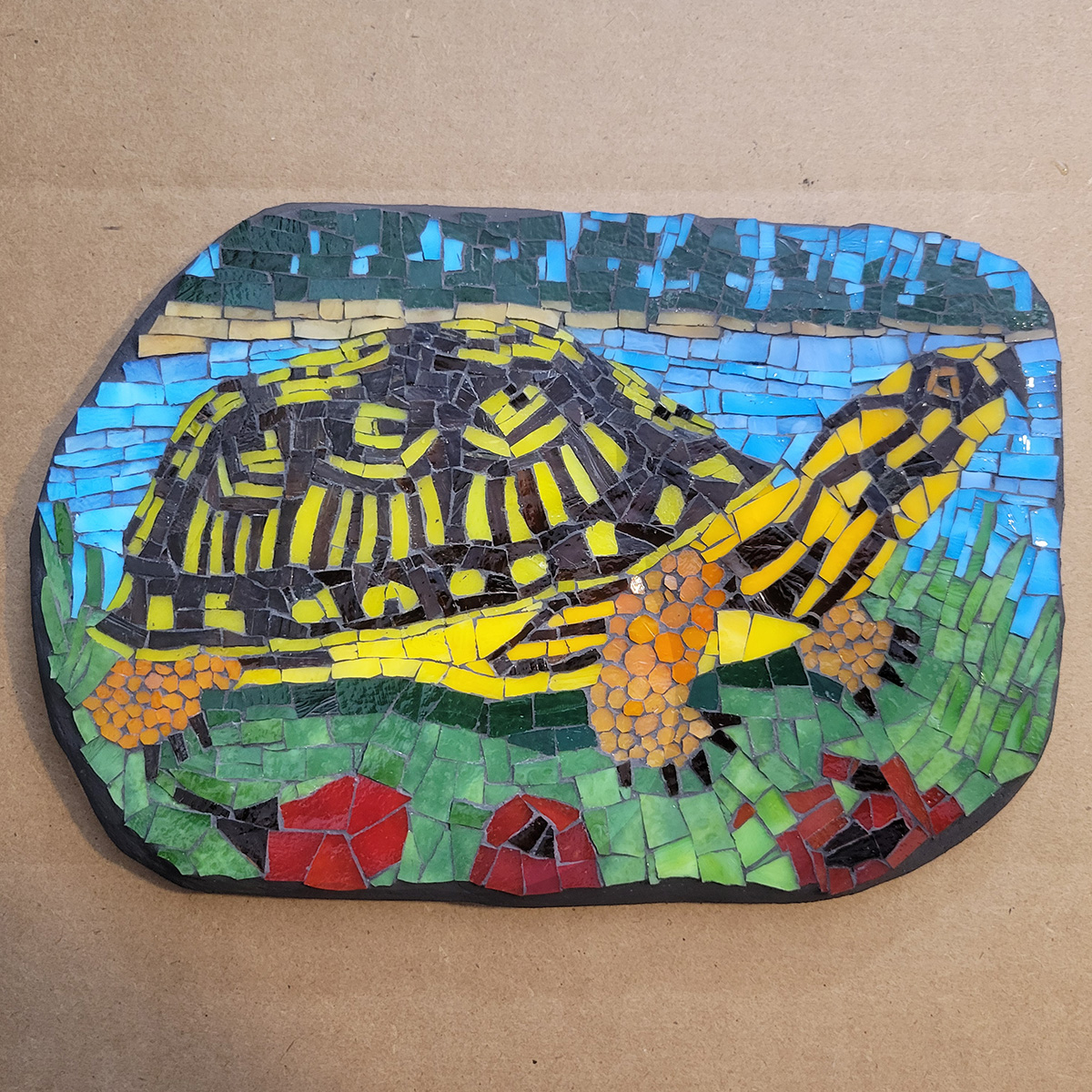
Box Turtle Mosaic
This mosaic was made on a temporary surface of clear contact paper. I looked at the shell patterns of countless Eastern Box Turtles. The shell pattern of the turtle in my mosaic is all of them and none of them. I had an interesting problem with the backer for this mosaic. I found a way…
-
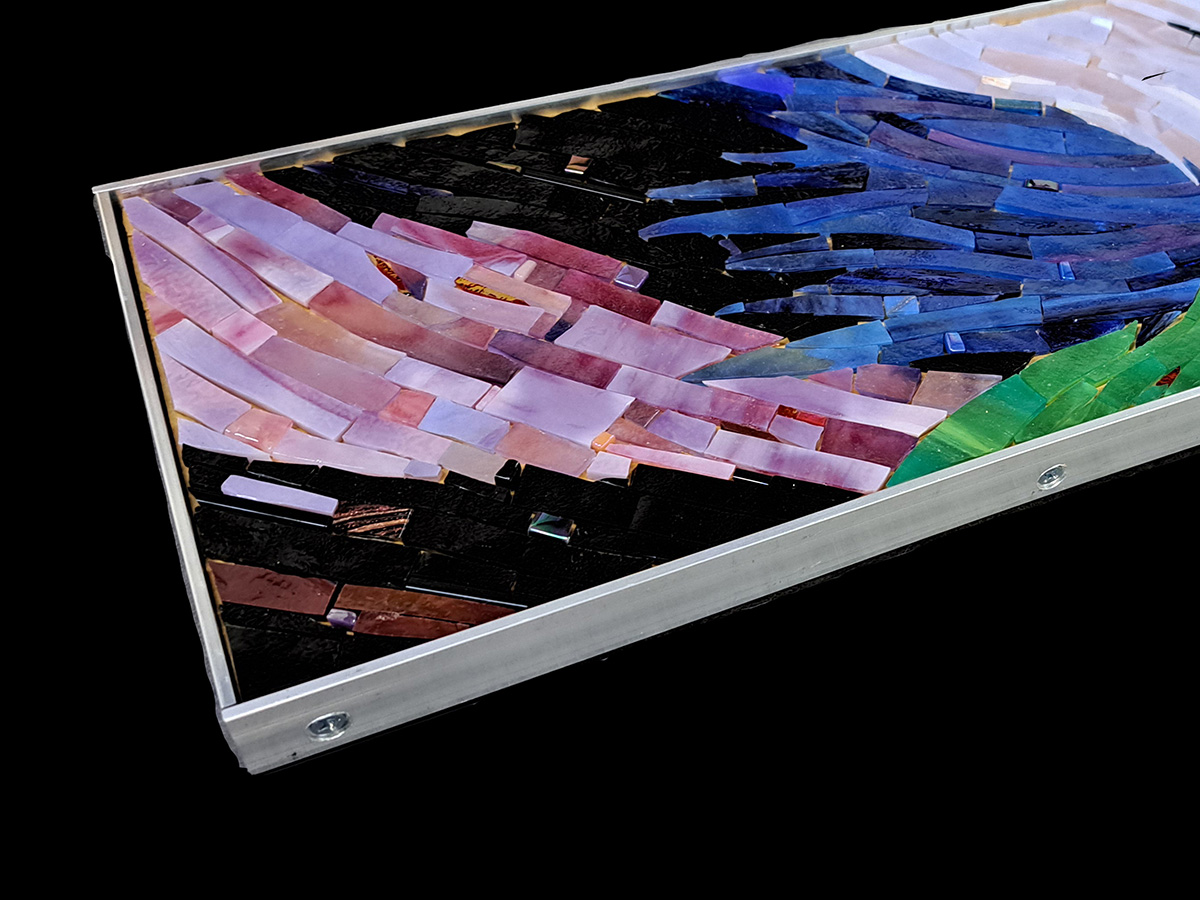
How to Make an Aluminum Mosaic Frame
The aluminum mosaic frame featured in this article was made by artist Natalija Moss from flat bar stock instead of angle stock. Natalija wrote highly-detailed instructions for making a mosaic frame from aluminum angle-stock that should be consulted for step-by-step details and fastener specifications. I wanted to feature her new mosaic in an article because…
-
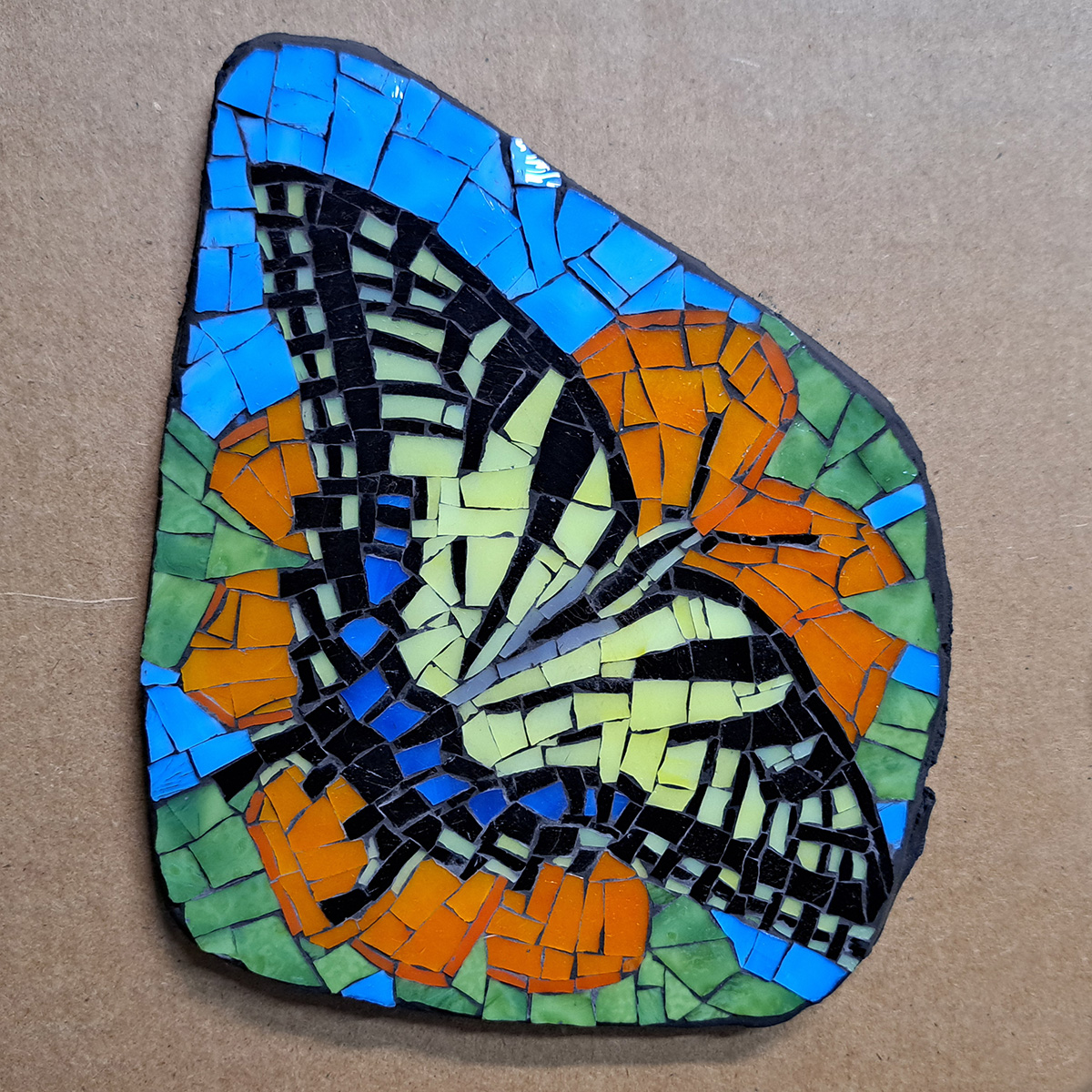
Temporary Surfaces Versus Mosaic Backers
My article about making patterns for irregularly-shaped mosaics shows other work-in-progress steps for the same mosaic I show here in this post. The mosaic is named for its subject, Eastern Tiger Swallowtail Butterfly. It’s about 6 x 7 x 1/2 inches in size. In this article, I show the creation of the temporary surface and…

